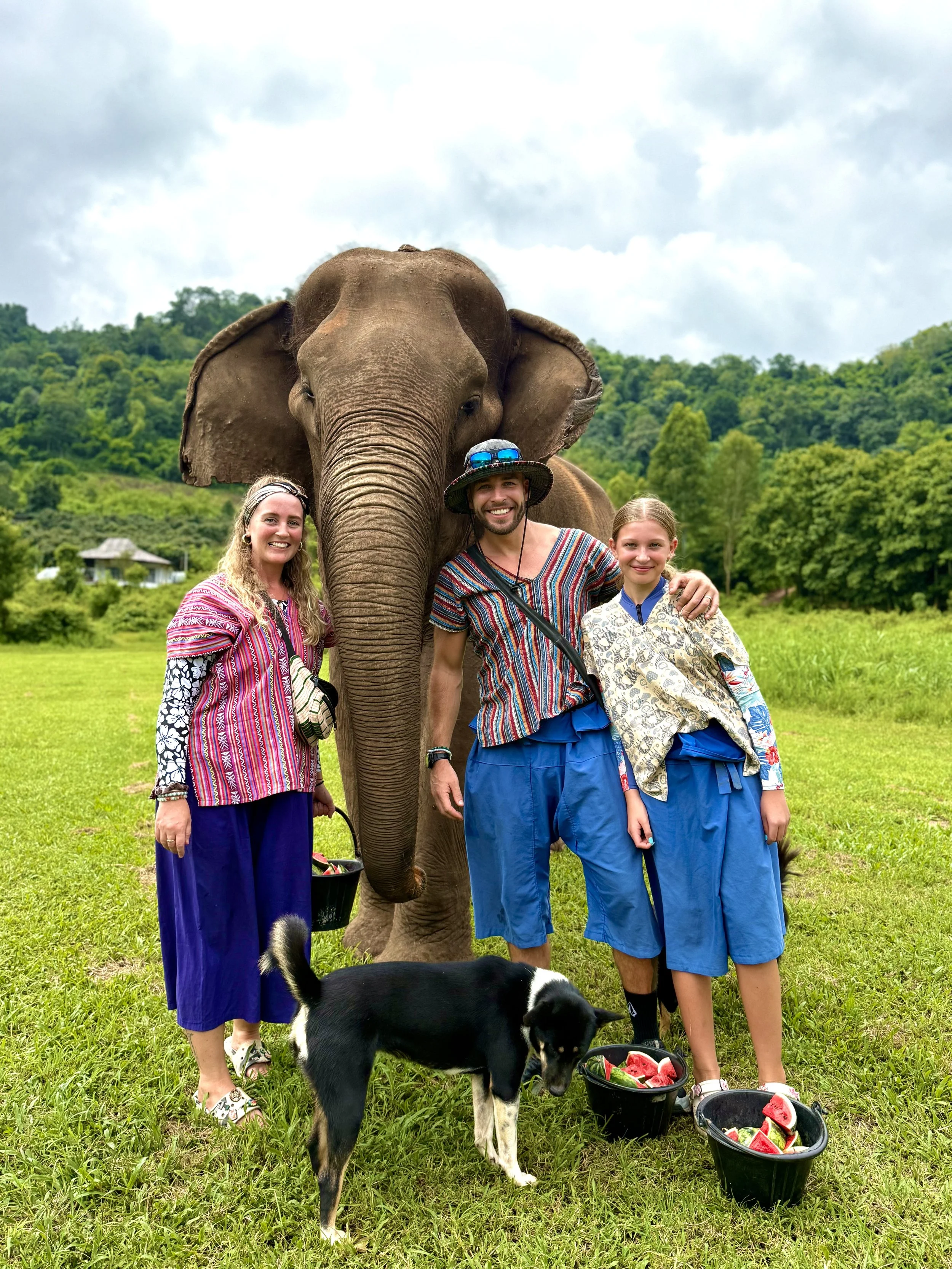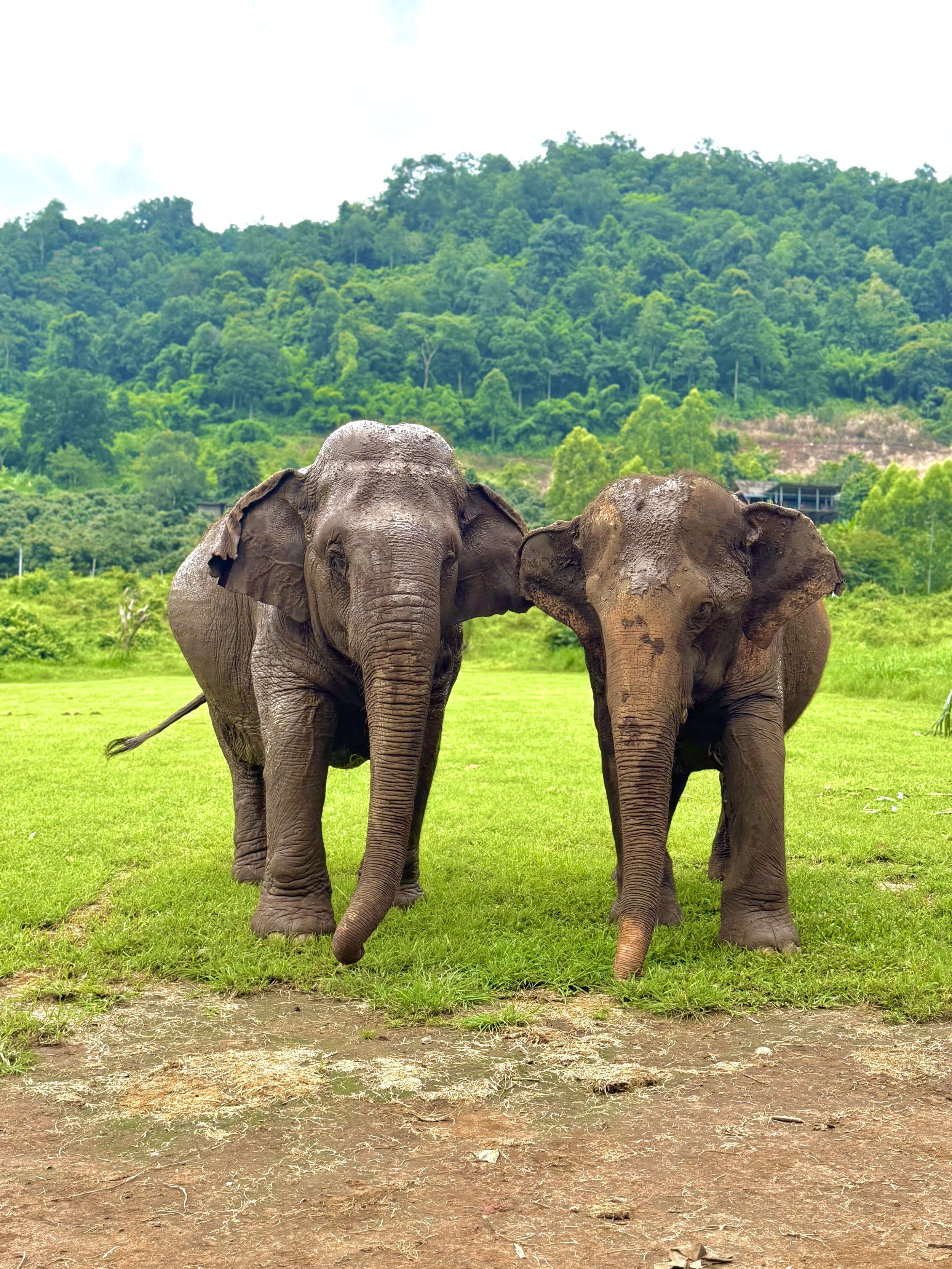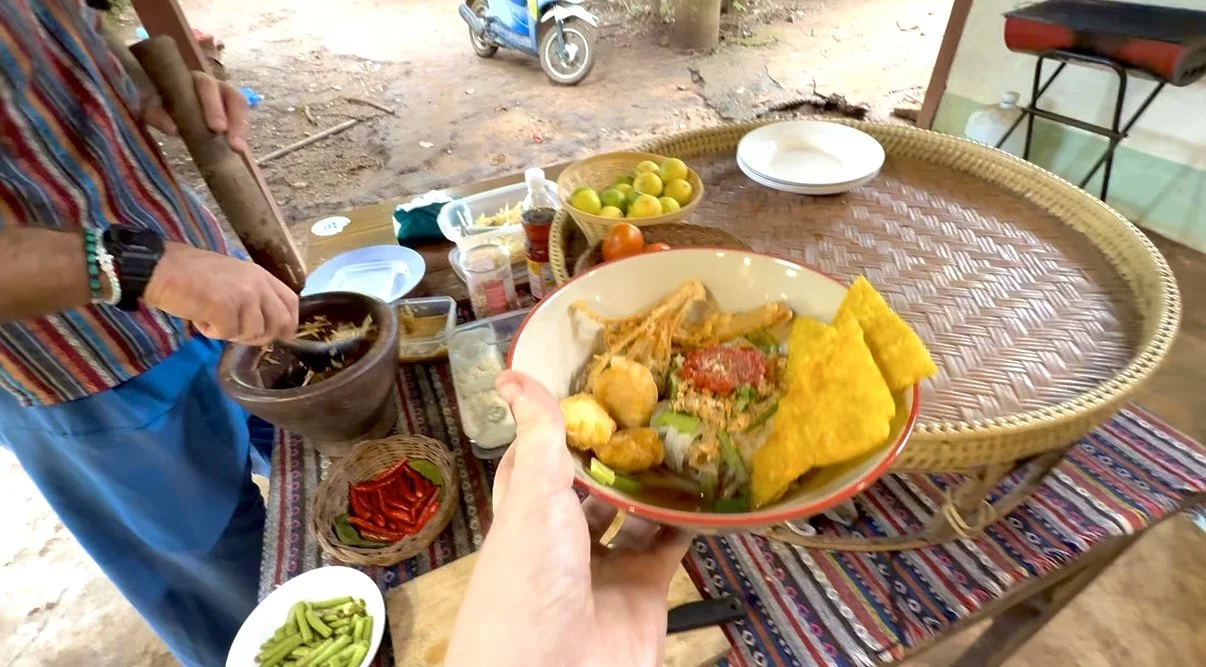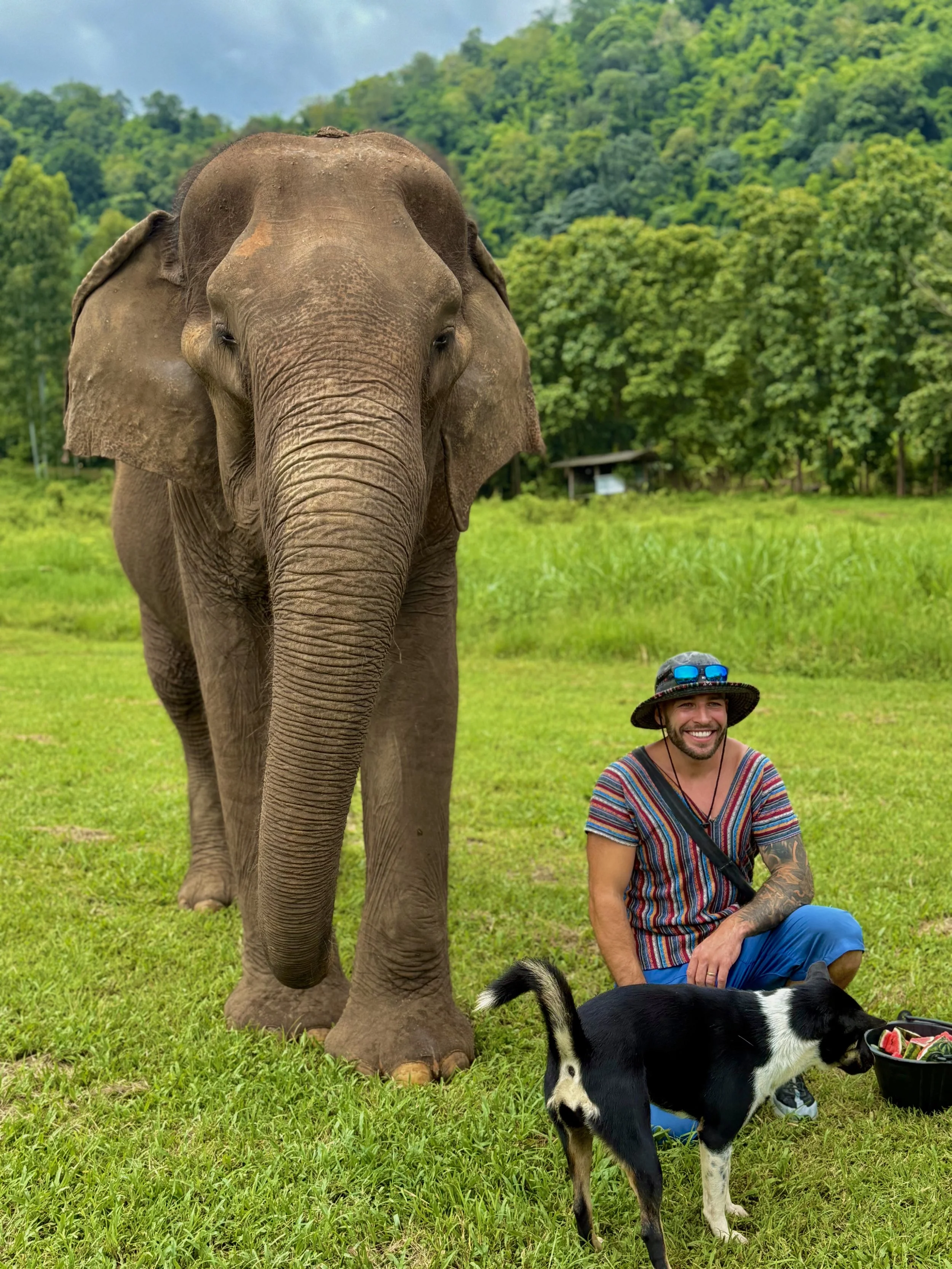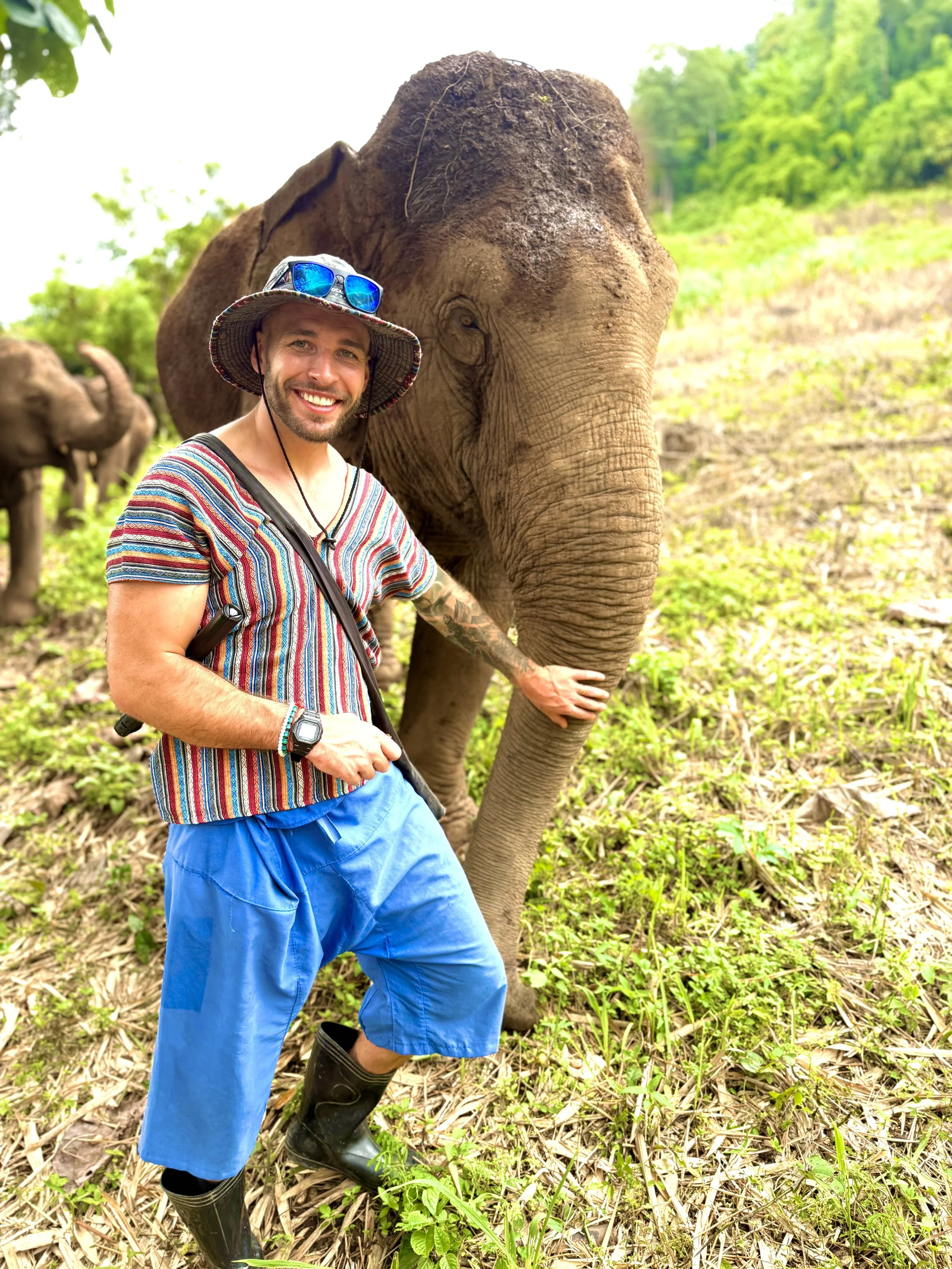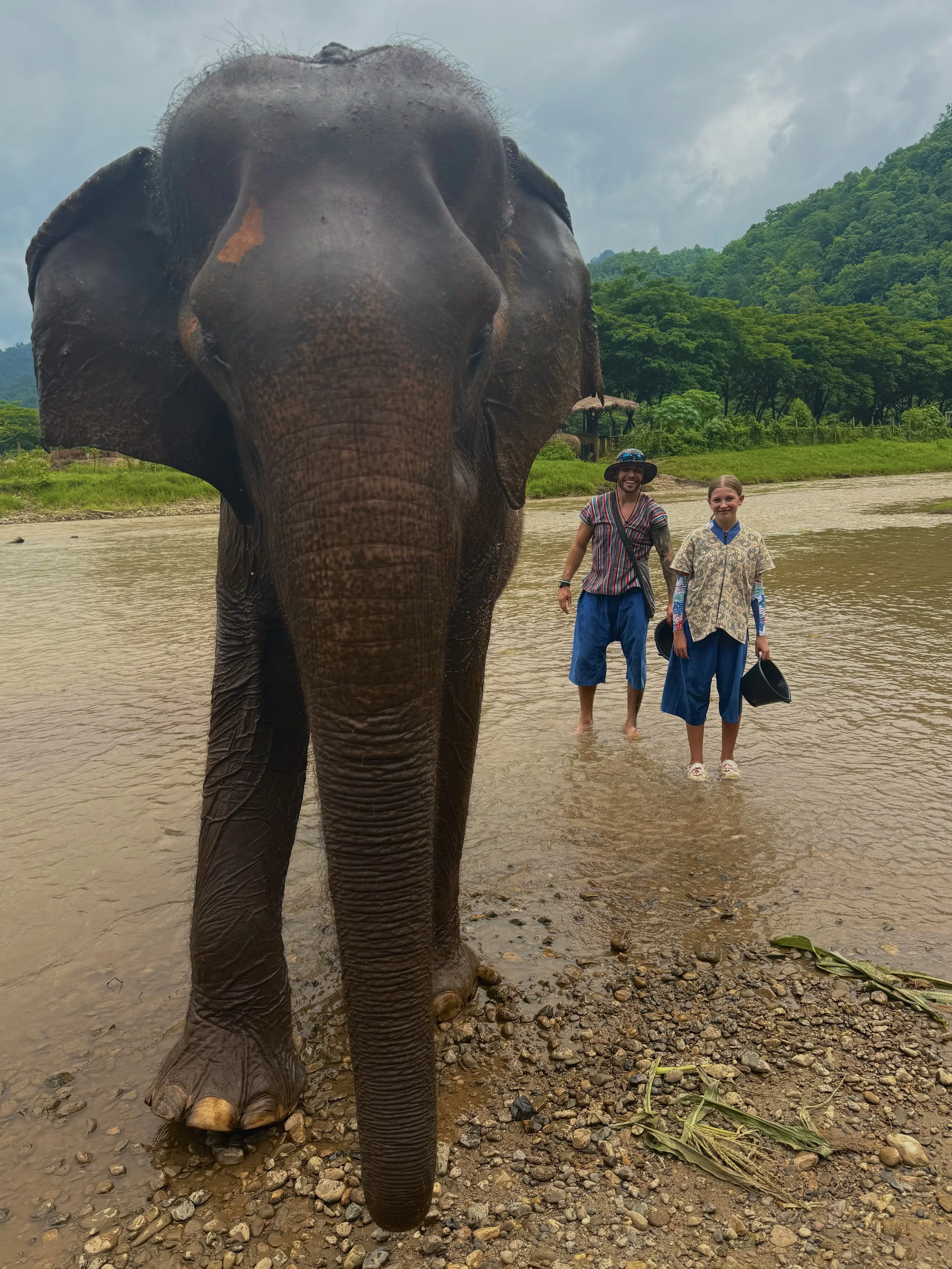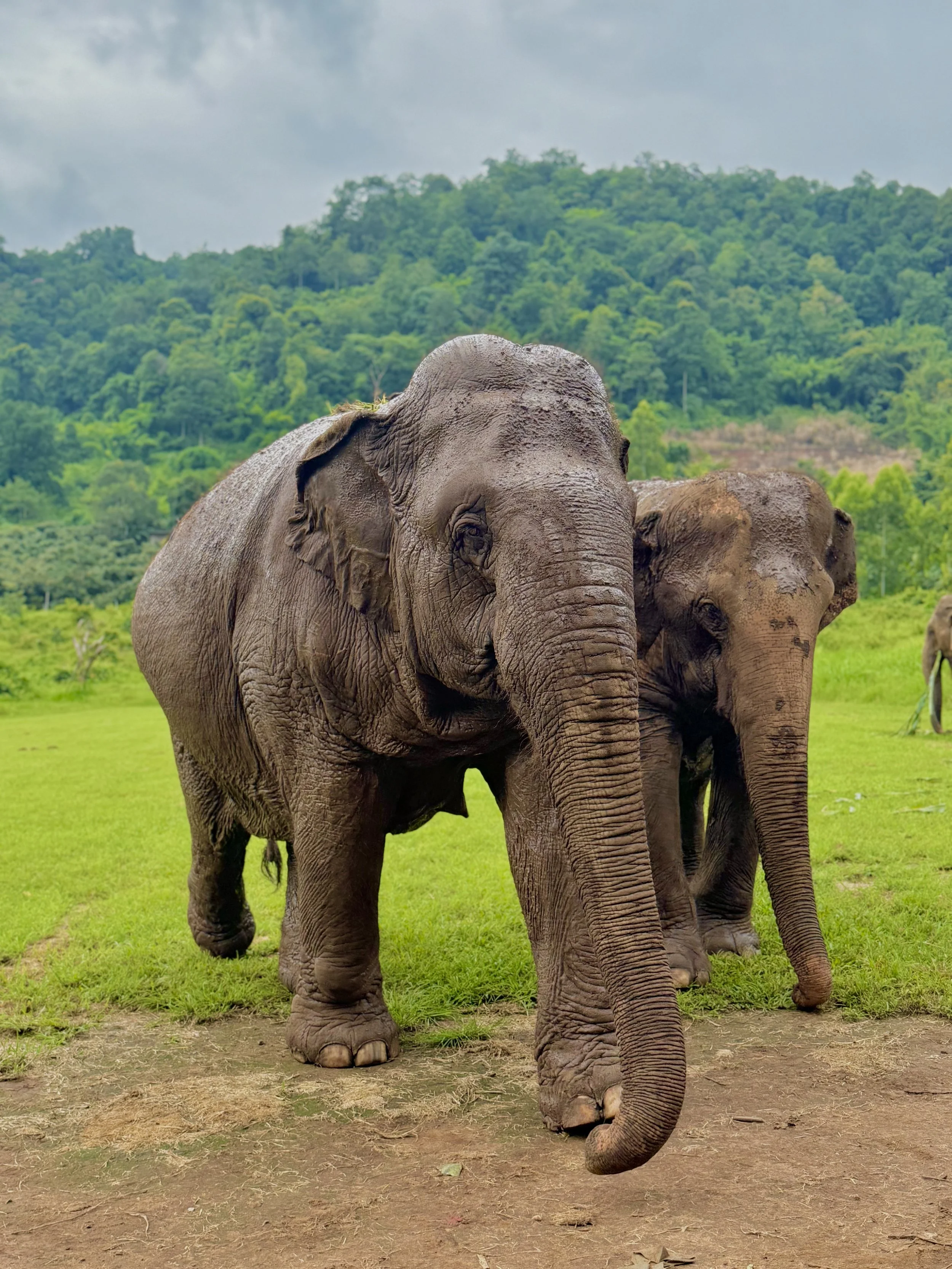Happy Elephant Home (Chiang Mai)
An Elephant Encounter, the Right Way
Meeting elephants in their natural habitat is pretty high on most families' Thailand bucket list—and it was definitely on ours! Of course, we wanted to make sure it was an ethical experience. After doing some digging (and dodging a slightly dodgy tour office in Chiang Mai’s Old City), we went with a lesser-known sanctuary called Happy Elephant Home (recommended by friends) —and we’re so glad we did.
First Impressions Matter (for Humans and Elephants)
From the start, we felt looked after—not just us, but the elephants too! The sanctuary is family-run, and we loved hearing from Apple (the owner’s sister) about how they rescued elephants after the floods, Covid, and years of mistreatment. You could tell the elephants had space to roam, and they actually looked relaxed and, well… happy!
A Jungle Walk with Willy (and Some Unexpected Gas Talk)
Willy, the owner and local jungle guru, took us on a walk with the elephants after lunch. He explained how important walking is for their health (yes, even elephants get a bit gassy without movement—who knew?). He also taught us loads about the jungle, plants, and village life. Total bonus.
A Thai Feast Fit for a (Very Hungry) Family
Speaking of food, Apple made sure we didn’t go hungry either—Thai breakfast, a informative, authentic cooking class for lunch (hello, Som Tam!), and plenty of fruit, biscuits, tea, and coffee throughout the day. I shamelessly went back for seconds, we felt very looked after!
Not a Circus Act—Something Much More Sacred
The whole day felt sacred, not staged. Small group sizes (9 people) meant the elephants weren’t overwhelmed, and neither were we. We got to feed them, trek with them, make their medicinal snacks, bathe them (prepare to get splashed and observe them in their natural habitat (including the mud baths- it gets messy).
What It Cost (And Why It Was Worth Every Baht)
For our family of three adults (yes, Tilly was full price!), the day cost 7,200 THB (around £163). We definitely gulped a little at the price—but honestly? 100% worth it. Between the care for the animals, the intimate experience, the food, the fun, and the education, it felt like money well spent. Plus, we were reassured that the money goes back into looking after the elephants welfare.
Final Thoughts!
It was hands-on, meaningful, and honestly one of our best family travel days ever. A beautiful reminder of why we worldschool in the first place—learning by doing, connecting with nature, people, and culture in a way that sticks.
🐘 Quick Tips for an Ethical Elephant Experience
Research first – No rides, no chains, free-roaming elephants = green flag.
Trust your gut – If a tour feels off, it probably is.
Ask around – Recommendations from fellow travellers can be gold.
Choose small groups – Better for the elephants and your experience.
Look for extras – Walks, cooking classes, education = more meaningful.
Dress for mess – Expect mud, water, and elephant surprises - bring a swimsuit & wet shoes/flip flops
Bring Cash – The staff take a picture of you and the elephant and put it in a frame, costing 200bht each (£4.50), a great souvenir to take home and it helps to feed the elephants (they eat ALOT)
Make it a lesson – Great chance to teach kids about animals, ethics & travel.

